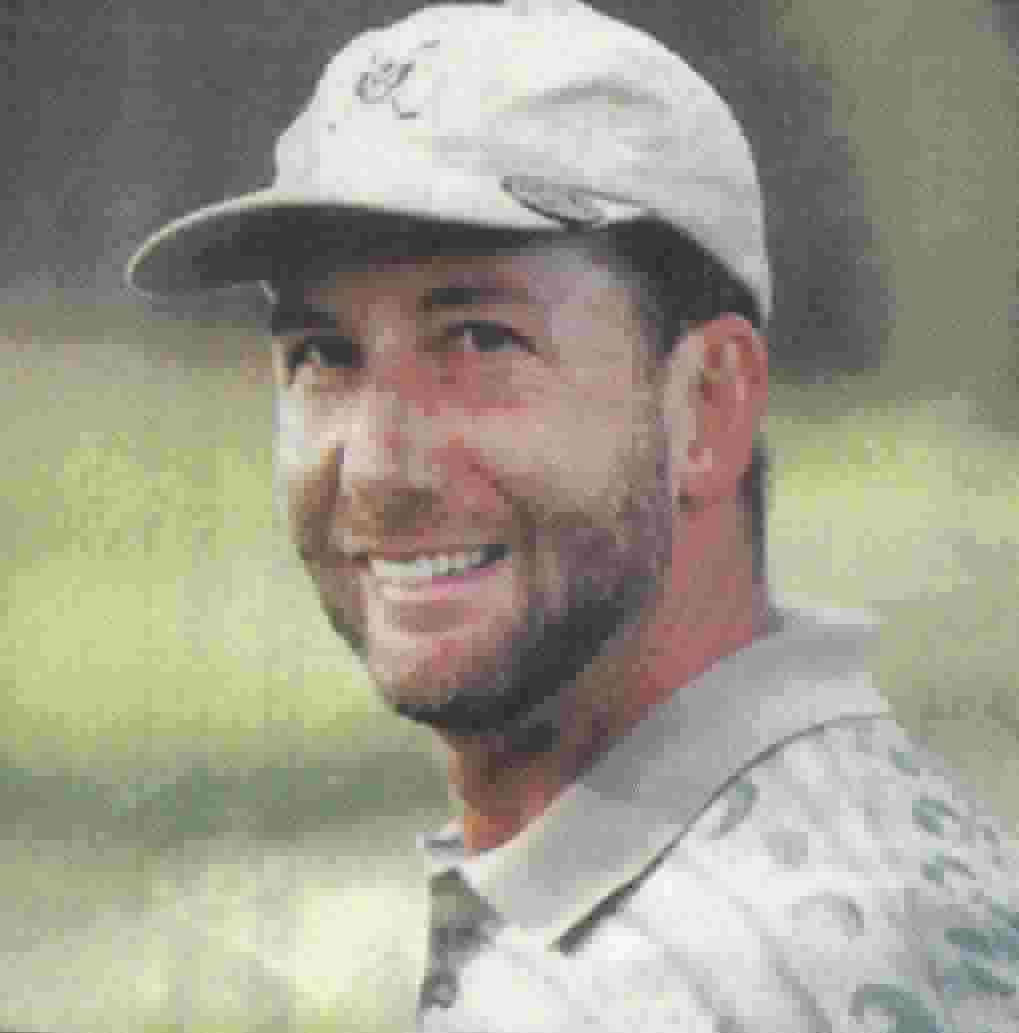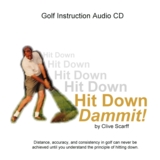The Short Game Part 2: Putting Statistics
Read
other Parts from the
Technology and Distance series
here, Archives.
If you'd
like one on
one explanations
about the topic,
sign up for the PGI
Member Select Club and
I'll answer all your
questions in a prompt,
thorough fashion.
Now on to this week's
topic.
II. What
are your putting
statistics?
How do you know
if you're improving?
In
the last newsletter,
I explained the
statistical signficance
of the short game
and why we should
all be working
on it the most.
The most important
part of the short
game to improve
is putting. Before
I embark on providing
tips for improvement,
its important that
you have a measure
to improve upon.
You need to know
where your putting
is at so that you
can compare it
later.
Keeping
track of the number
of putts per round
is not the best
method of measuring
your putting ability.
The number of putts
you make depends
largely on the
length of the putts.
If you hit 14 greens
one day and then
5 greens the next,
it is highly likely
that you had fewer
putts when only
5 greens were hit
because the average
putting distance
was shorter. I
much better measure
is how many putts
you make from various
distances, whether
they be for birdies,
pars or bogeys.
I
find that most
golfers are unrealistic
about they're putting
and so are very
hard on themselves
which leads to
more putts and
a negative effect
on the rest of
the game. For example,
a golfer hits the
first 8 greens
and
has
quite a
few chances for
birdie inside of
15 feet. He makes
none of them, grows
frustrated, puts
more pressure on
himself to hit
it even closer.
The result? His
ball striking deteriorates
and his score skyrockets.
Sound familiar?
How
many 10 or 15 footers
does one typically
make? Take a look
at this graph of
Putting
% versus Length
of Putt (the
graph will open
in a new window).
For a 10 footer
(or
about 3 metres),
a touring pro averages
40%.
A high handicapper
(15 - 30) averages
24%. A touring
pro makes almost
twice as many.
Take a look at
how much time those
pros spend on their
putting. These
are averages. What
we usually view
on TV are the best
players on the
weekend. They have
the lowest scores
because they are
sinking the most
putts. They're
having exceptional
putting rounds.
They are not putting
their average.
When
many golfers set
their expectations
for putting, however,
they think of what
they've seen on
TV, yet few putt
in anywhere near
the time required
to become that
good of a putter.
The golfer that
hits the first
8 greens and doesn't
sink a putt, their
putting average
to that point is
0% instead of the
average 24%. On
another day, their
average may be
50% of the putts.
One
putt percentages
don't give a true
reflection of overall
putting ability.
Two players may
sink 10% of their
15 footers, but
one may 3 putt
more of them. A
better statistic
is the average
number of strokes
taken from different
distances. Here
is a sample of
stroke averages.
Putt
Length |
Pro |
Hcp 0-4 |
Hcp 11 |
Hcp
26 |
Me |
3
feet |
1.07 |
1.22 |
1.35 |
1.50 |
1.15 |
6
feet |
1.32 |
1.46 |
1.62 |
1.86 |
1.42 |
10
feet |
1.54 |
1.63 |
1.83 |
2.10 |
1.62 |
15
feet |
1.75 |
1.76 |
1.98 |
2.29 |
1.72 |
20
feet |
1.86 |
1.86 |
2.10 |
2.43 |
1.92 |
30
feet |
1.96 |
2.00 |
2.27 |
2.61 |
2.02 |
40
feet |
2.00 |
2.10 |
2.38 |
2.77 |
2.07 |
50
feet |
2.10 |
2.20 |
2.50 |
2.91 |
2.39 |
For
myself, a 2 handicapper,
my overall
putting is better
than the average
0 - 4 handicapper.
My putting is one
of the main reasons
I remain a low handicapper.
On 10, 6 foot putts,
I'll take on average
14.2 strokes while
a 26 handicapper
will take 18.6 strokes;
that's a 4.4 stroke
difference. And remember,
these are averages.
One day I may take
18 strokes and on
others I may take
10 strokes. I
encourage you to
keep your putting
statistics like I
do above so that
you can monitor your
progress. It will
give you an accurate
measure of how you're
doing. You can compare
your stats to the
table above. All
you need to do on
your scorecard for
each round is record
the length of each
putt and how many
strokes it took to
hole out. Pace out
your distances trying
to take 3 foot paces.
As you gain experience,
you'll be able to
estimate many putts
without pacing.
For
example, let's say
you measure a putt
to be 6 paces, or
18 feet. I would
record this as a
20 foot putt (round
to the nearest 5).
You hit the ball
6 feet past the hole
and sink the 6 footer.
You would record
a 20 footer with
2 strokes taken and
a 6 footer with 1
stroke taken. If
you were to have
missed the 6 footer,
it would be recorded
as 2 strokes. If
you stroked the 20
footer to within
tap in range, you
would only record
a 20 footer with
2 strokes; there
is no second putt.
After
about 10 rounds,
you'll have enough
putts to calculate
a realistic average.
In my previous 10
rounds, I've had
39, 10 footers, and
I've taken 66 strokes.
The average is 63/39
= 1.62. If you
choose to implement
some of my putting
tips, you'll be able
to determin if in
fact they are making
a significant improvement
in your putting.
Next
time, I'll provide
you with some great
tips I've learned
to read putts. Most
golfers, even professionals,
under read putts
significantly. Just
improving your ability
to read greens will
enable you to sink
more putts, which
will increase your
confidence and improve
your putting further.
I happen to use
Plumb Bobbing quite
successfully to
read putts. That's
just part of what
I'll talk about.
Please do a little
homework, and read
what I already
have on my site
here.
Purchase
my Longest
Golf Ball Report (over
270 sold so far)
in which I statistically
analyze
distances
of over 70 different
golf balls with
differing constructions.
The balls were
hit
using a mechanical
hitting machine.
Play
with my Driver
Distance Calculator.
You can input such
variables as loft
and clubhead speed
to determine the
optimum loft. I'll
be adding to it
soon so that you
can input different
golf ball parameters
such as speed and
spin.
A list of resources that have been used to produce this newsletter
can be found on my
website here.
The next newsletter's topic will be on reading putts (break
and distance). If you
have any questions ahead of
time, send me an email.
The focus
of my site
is to utilize science
and math to lower
your score. New technology
is one
way to achieve this,
but to be honest,
the technology is
one small piece of
the puzzle.
To actually improve significantly,
we all need to:
1. Improve our swings using CD
Interactive, Hit
Down Dammit!
2. Learn how to swing simpler
like the Iron Byron
with the great coffee
table book, Swing
Machine Golf!
3. Improve our physical fitness
and strength.
The
Golf Trainer Power
Performance Programô
4. Improve our mental games.
Golf
Mind Software
5. Improve our Probable
Golf games.
Learn how to make better
choices on the course
through knowing how
shot patterns and reading
the elements and course
better.
Click on the links above to
take a look at
ways that I personally
use myself and
recommend you try
as well.
Hope
I provided some useful
ways for to become
better prepared for
you best golf season
ever.
Ken Tannar
If you'd like to opt out of this newsletter, send
me an email with the subject "opt
out, please"
|








